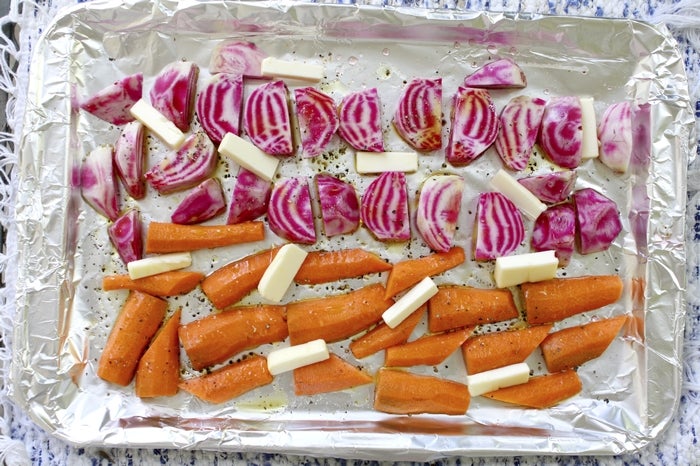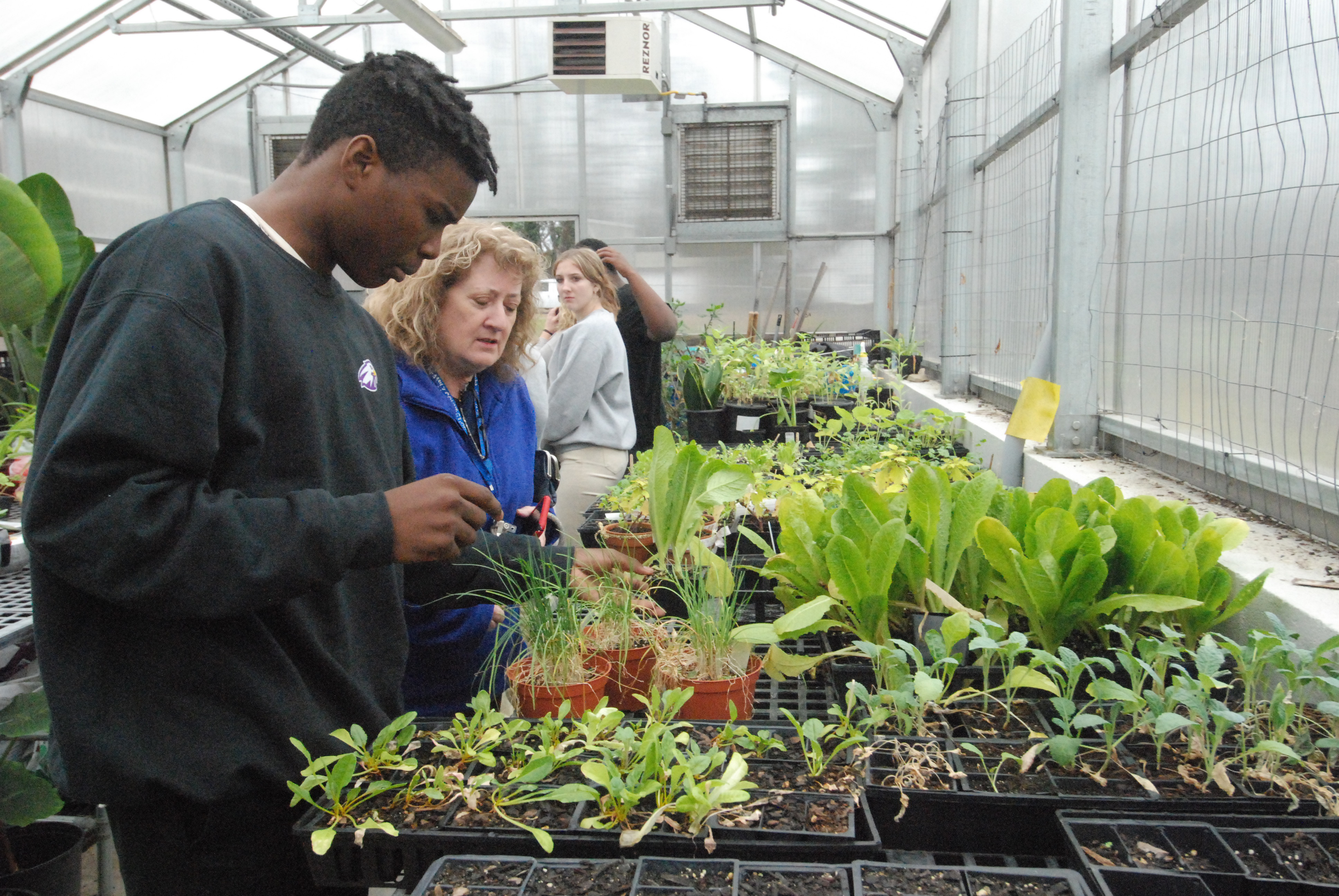Quit beating up on beets
Published 12:00 am Tuesday, June 16, 2015

- Stephen Smith/For the Salisbury Post. Cut raw beets and carrot into similar sizes, drizzle with a little red wine vinegar, add butter, salt and pepper and roast.
By Deirdre Parker Smith
deirdre.smith@salisburypost.com
The common response to “We’re having beets tonight” is “Yuck!”
Beets are unfairly maligned. If beets taste bad, maybe they weren’t prepared properly. Beets are good sources of vitamin C, potassium, folate and fiber. They also contain antioxidants and nitrates.
Beet juice has been touted for its health benefits, especially in providing nitrates. It can help lower blood pressure in healthy adults and can increase stamina during exercise. Of course, you have to drink 2 cups of beet juice daily for that.
Let’s start slowly and enjoy beets hot and cold, roasted and pickled.
A cup of beets has 59 calories (yay!) and 13 grams of carbohydrate. It also has 442 mg. of potassium and 11 percent of your daily need for vitamin C. Oh, and 3.8 grams of fiber. Overall, a good profile.
Yes, beet juice stains. If you’re handling beets, it’s a good idea to wear gloves, and change that white shirt. It’s that color that holds power — betacyaninins — that may help fight cancer.
Some advocate eating the beets raw, which isn’t bad. They are crunchy and sweet. Cooking dims their antioxidant power.
But cooking also amps up the flavor.
And really, you’ll be amazed once you start looking at beet recipes. Anywhere you want a little sweetness, you can use beets. There’s even a recipe for Beet Chocolate Cake.
Maybe you’re not quite ready for that.
Beets can be boiled, roasted or grilled. Roasting and grilling bring out the sweetness with the added flavor of a light char.
You can wrap whole beets in aluminum foil for the grill or oven. In the oven, place them on a tray and bake at 400 degrees from about 1 hour if they are large. The peel will slip right off. You can also peel a raw beet and cut it into slices or wedges and roast on a tray with salt, pepper, a little vinegar and olive oil. This takes about 35 minutes. Rosemary goes well with beets. So does thyme. Toss a bit on the tray.
• Toast a few slices of French bread in the oven, top with cooked beets, honey and goat cheese. The tanginess of the goat cheese matches well with the beets.
• This is one is completely unexpected — Beet and Goat Cheese Hummus. You’ll need one large beet, a can of chickpeas (garbanzo beans), 2 lemons, 1/4 cup tahini paste (or peanut butter) salt to taste, 4 ounces goat cheese, crumbled, and 1/4 cup olive oil. Chop the beet into cubes and bake at 400 degrees for 25-30 minutes. Allow it to cool. Combine the beet, plus its juice, drained chickpeas, the juice from the lemons, salt, tahini and goat cheese. Whir in a food processor or blender while adding olive oil. If it’s too thick, add a little water. It will be audaciously pink. Thanks to abeautifulmess.com for the recipe.
• Pickle them in a snap. Boil 6-8 beets for 15-20 minutes. Drain and rinse in cold water. Peel skin and cut roots off. In a pot big enough to hold the beets, stir together 1/3 cup vinegar, 1/4 cup sugar, 1/4 cup water, 1/2 teaspoon cinnamon, 1/4 tsp. salt and 1/4 tsp. ground cloves. Bring beets and liquid to a boil, simmer five minutes, then chill. Will keep in the refrigerator for about a month.
• Make an orange glaze for your beets and you could almost serve them for dessert. Roast or boil your beets until tender, peel and cut into slices. In a saucepan, combine 1 Tbsp. brown sugar, 1 Tbsp. butter, 1 Tbsp. cornstarch, 1//2 tsp. orange zest and 1/4 cup orange juice, Melt butter, stir in sugar and cornstarch, then zest and juice. Cook until thick and bubbly, then add beets and stir till coated and heated through. You can also use this recipe for canned beets.
• For a beet salad, simply toss cooked beets with a simple vinaigrette of two parts olive oil, one part red wine vinegar and a teaspoon or so of mustard.
• Beets like dill, as well, so you could mix cold beets with dill and sour cream, salt and pepper for a fast salad. Add sliched Vidalia onion, if you like.
Sara Pitzer, a former Post employee, author and lover of fresh foods, shared her borscht recipe, but her cooking style is a little loose. A bit of this a dash of that. I had some of her borscht once and it was superb. Here are her general instructions:
Sara Pitzer’s Borscht
Beef broth
Smoked Polish sausage
Cooked beets
Onion, sliced or chopped
Celery, chopped
Cabbage, torn
Turnips, cut into cubes
Salt and pepper to taste
Saute the onion and celery a little in the soup pot, (with butter or oil) then add everything else, including the broth, and simmer. Add a sweet and sour mixture of vinegar and sugar (2 Tbsp. of vinegar and 1 Tbsp. sugar) and serve with sour cream. Leave the sausage out for a vegetarian soup.
A typical borscht recipe for 2 quarts of soup uses 2 quarts of broth, 1 large onion, 1/2 head of cabbage and 2 celery stalks. The turnip could be 1 large or 2 small, or you could use a parsnip.
The variations of borscht are endless, but Sara is firm on one thing: No potatoes.
This weekend, we roasted a whole duck (first time) and had fresh corn from Miller Farms first picking and beets and carrots roasted with a balsamic-honey glaze.
We made a simple orange sauce for the duck using orange juice, chicken stock and orange marmalade.
The beets and carrots were the biggest hit.
Roasted Beets and Carrot with Balsamic Honey Glaze
4-5 medium beets
2-3 carrots, depending on size
Butter/olive oil
1 Tbsp. red wine vinegar
Salt and pepper
2 Tbsp. balsamic vinegar
2 Tbsp. honey or maple syrup
For the beets and carrots, peel and cut the beets into wedges, about 1/2-inch thick. Peel and cut carrots into roughly the same size as the beets. Try for an equal amount of the two vegetables.
Place on a foil lined baking sheet and dot with butter or sprinkle with oil. Add salt and pepper to taste and sprinkle over the vinegar. Roast at 425 degrees 30-35 minutes. Don’t let the vegetables get too brown. The sugars can go from caramelized to burned quickly.
While beets and carrots are cooking, in a medium saucepan combine the balsamic vinegar and honey or maple syrup. Bring to a boil and add the beets and carrots, tossing to coat. Reduce heat to simmer and allow sauce to thicken and coat the vegetables.
This recipe wins no prizes for looks. The sauce is a deep, dark brown, almost black. The dish is excellent served hot and nearly as good cold.





